The Arizona Route 66 Museum in Kingman
On Sunday, November 17, we drove 195 miles from Phoenix to Kingman, arriving at about 1:45.
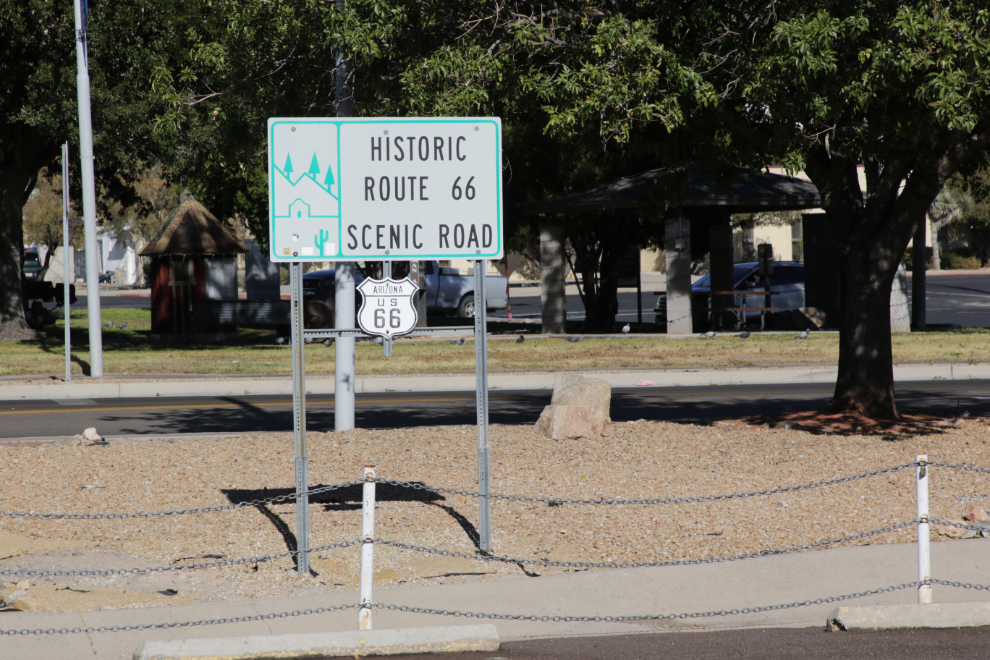
Kingman is one of the places that anyone with an interest in Route 66 must visit, being in the heart of the longest remaining stretch of Route 66 (158 miles). Starting in Chicago and ending in Santa Monica, Route 66 was 2,451 miles long, and became an iconic highway in the 1930s and ’40s. In one of two blog posts about it that I wrote in 2014, I said “For anyone who still has a bit of their brain stuck in the 1950s, that road is almost sure to be part of the memory.” I went to the Route 66 Museum in Kingman when I drove my new motorhome from Phoenix to Whitehorse in August 2014, but I arrived early in the morning and didn’t have time to wait for them to open. This time the museum was a priority.
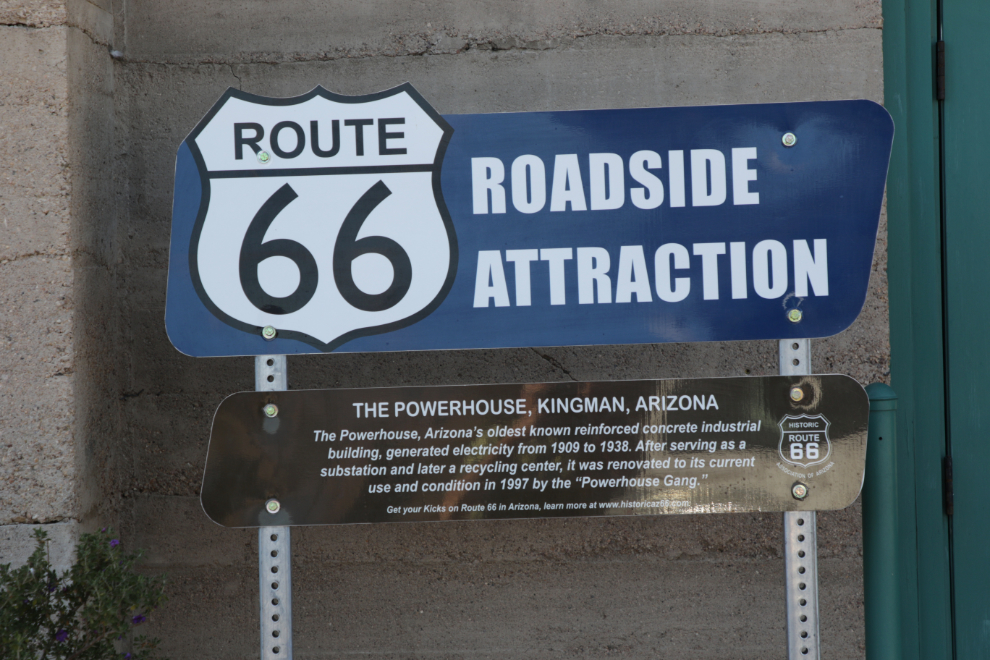
We started off in the tourist information center / gift shop, picking up some literature and ideas for our road trip. I asked the fellow on duty where we could go to explore at much lower speeds, with the top down on the car. He suggested the section of Route 66 leading to the old mining community of Oatman could work, but the way he described it was as much as warning as a suggestion – a warning about how narrow, winding and slow some of it was. Perfect! That would be our after-museum drive 🙂
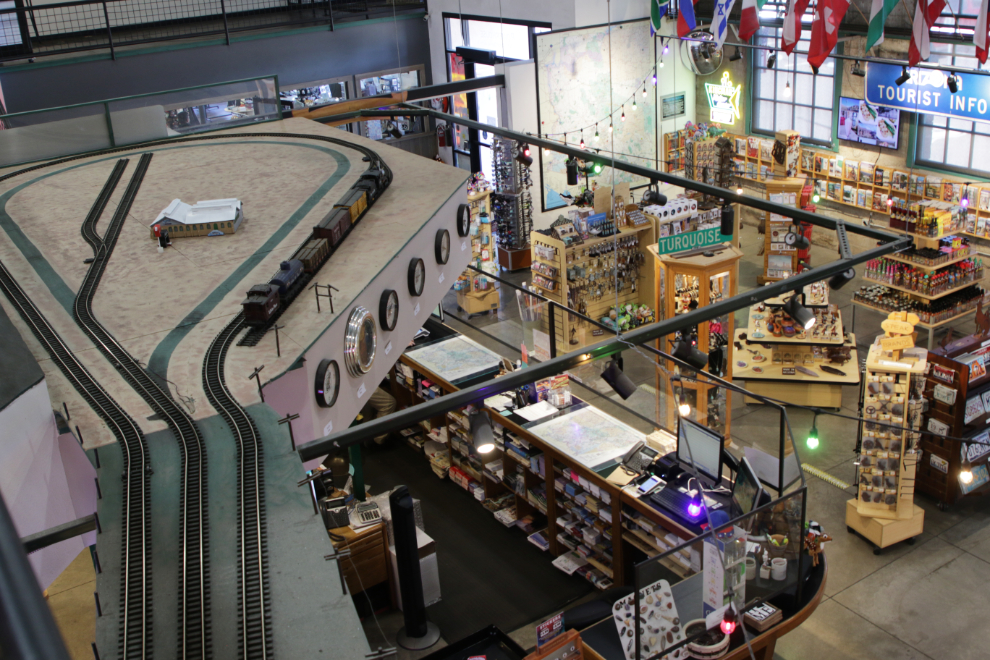
The charge for the museum is $10, $6 for seniors – definitely good value.
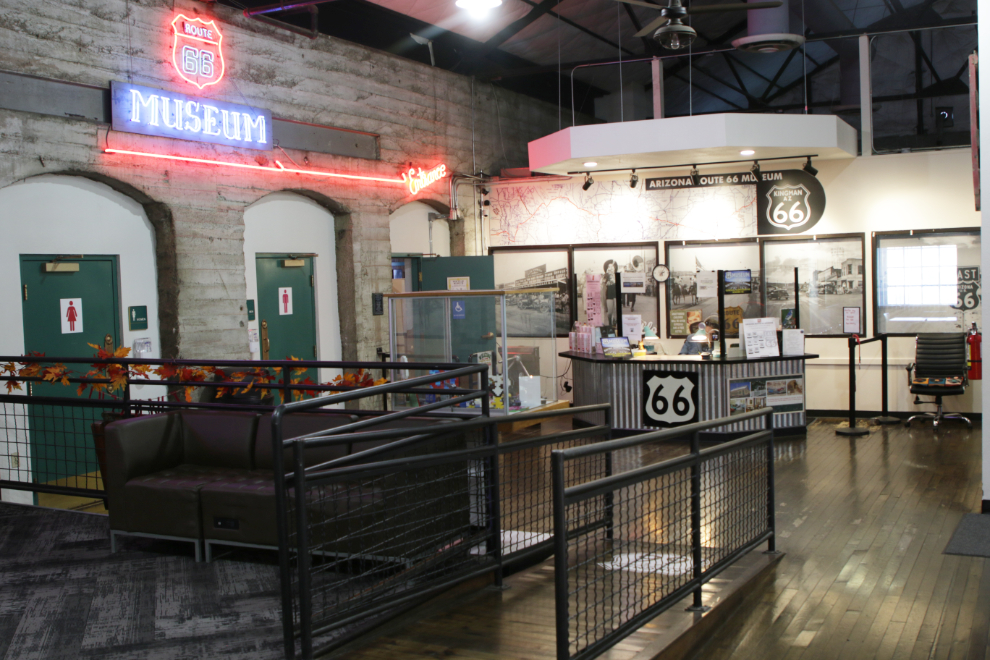
Before going into the museum proper, there’s a large display about Angel Delgadillo, the “Guardian Angel of Route 66.” A barber in the town of Seligman, he is credited with starting the movement to save as much of Route 66 as possible as a historic highway.
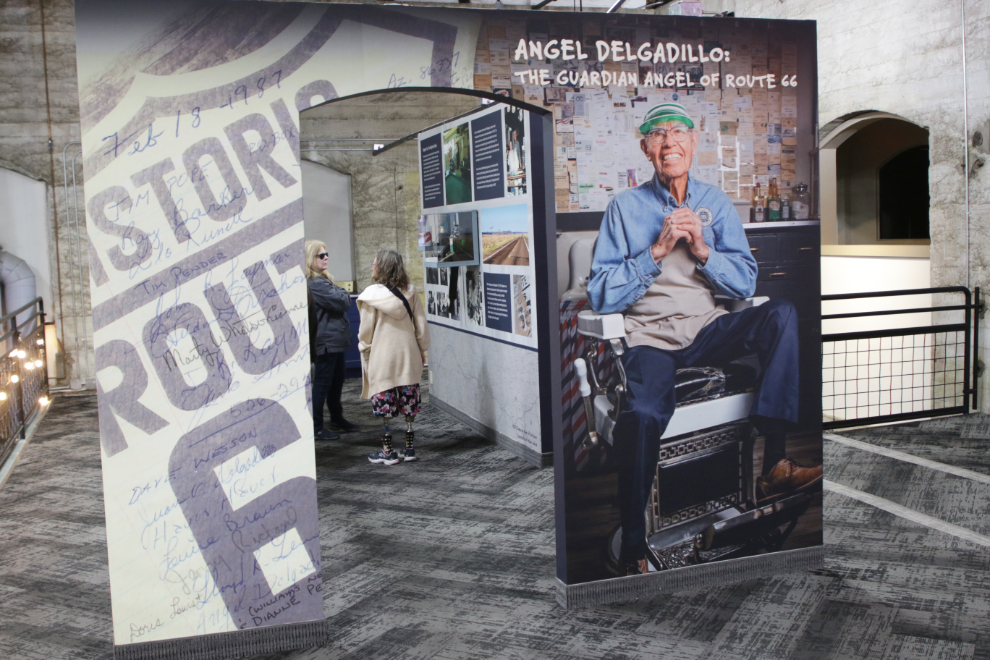
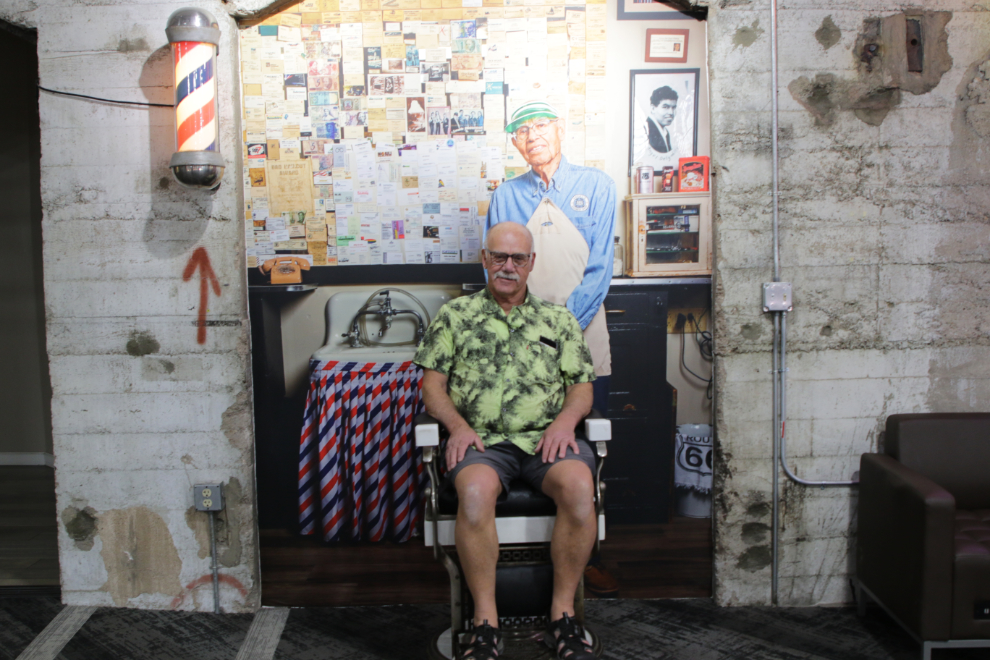
A look at travel across Arizona before the highway.
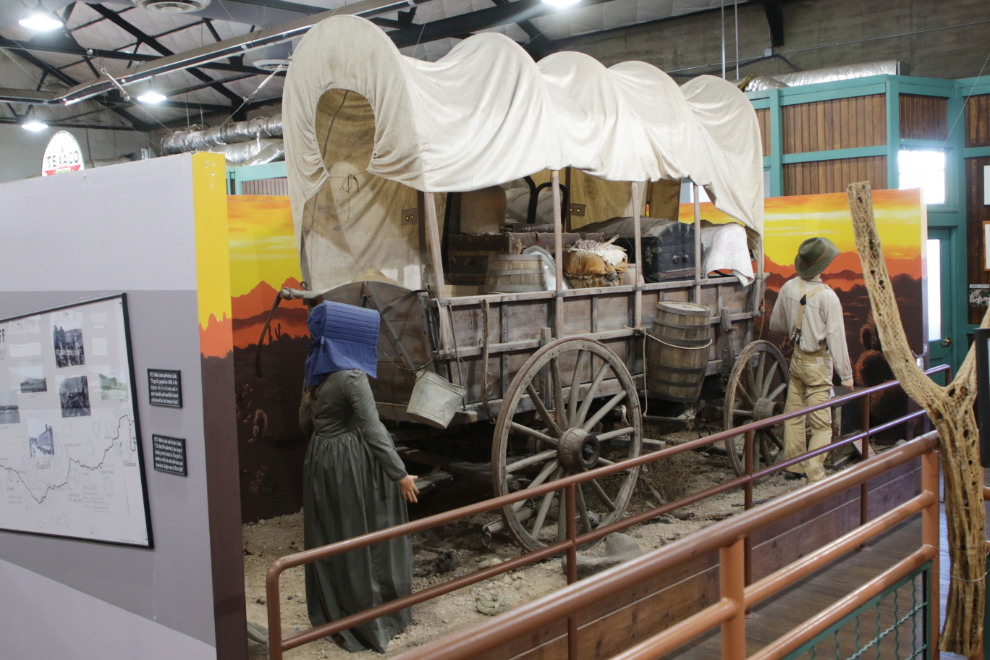
Before Route 66 the National Old Trails Highway crossed much of the continent, and these large panels show great detail of the sections across northern Arizona.
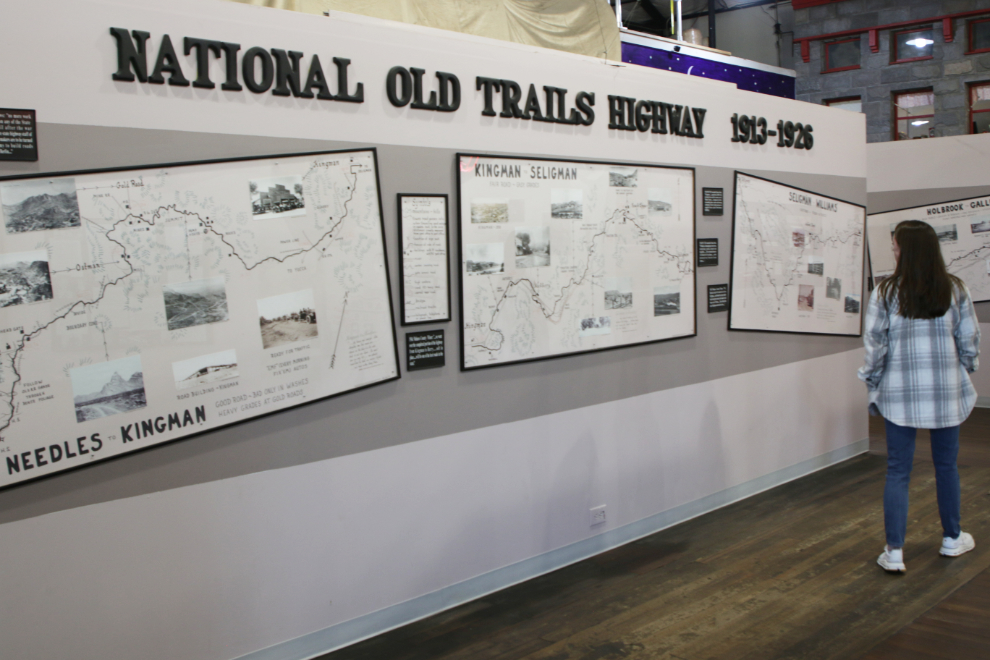
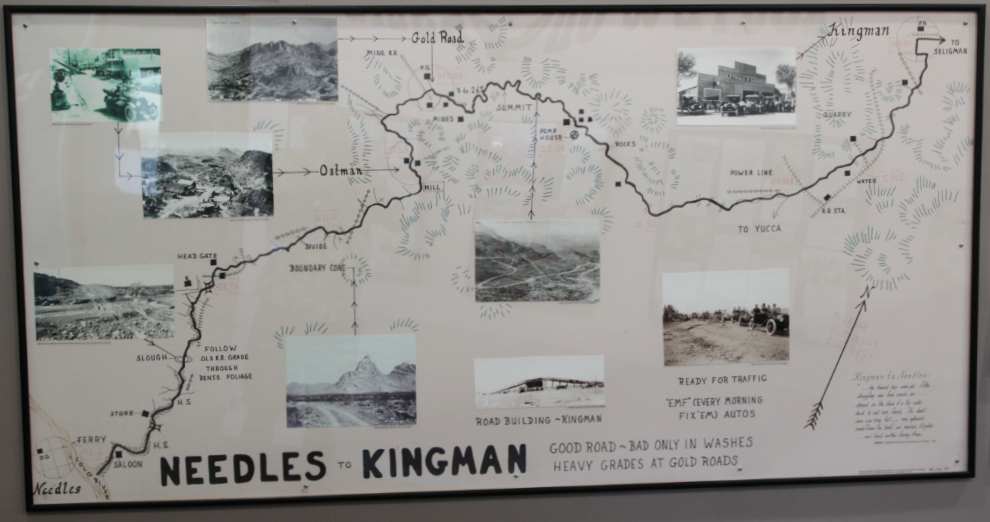
The description of this large photo of the road to Oatman states that the road still looks much this – that certainly cemented the decision to drive it.
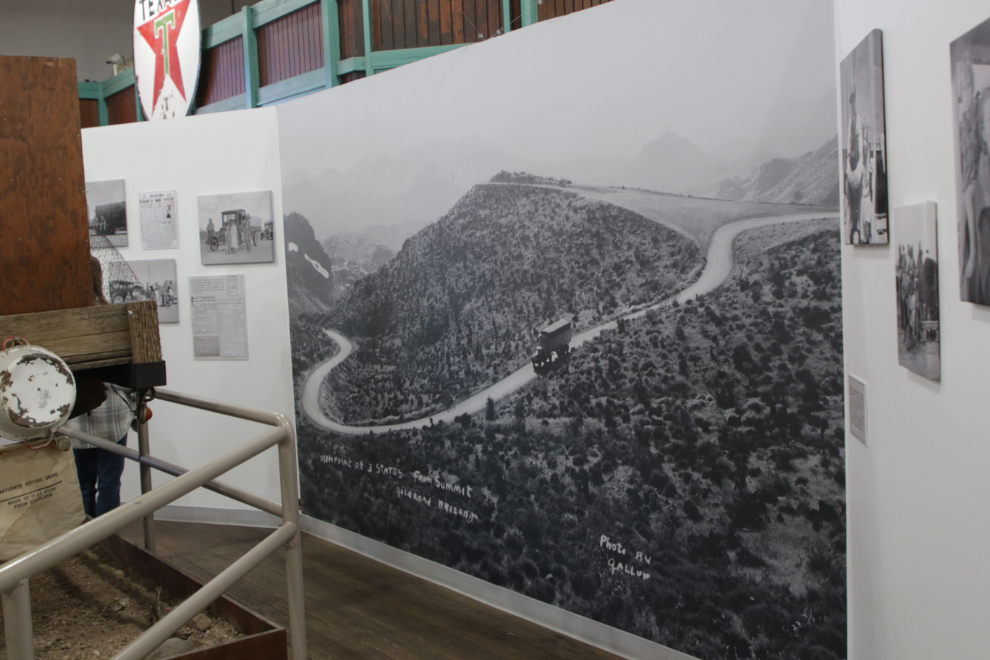
Roughing it during the search for a better life.
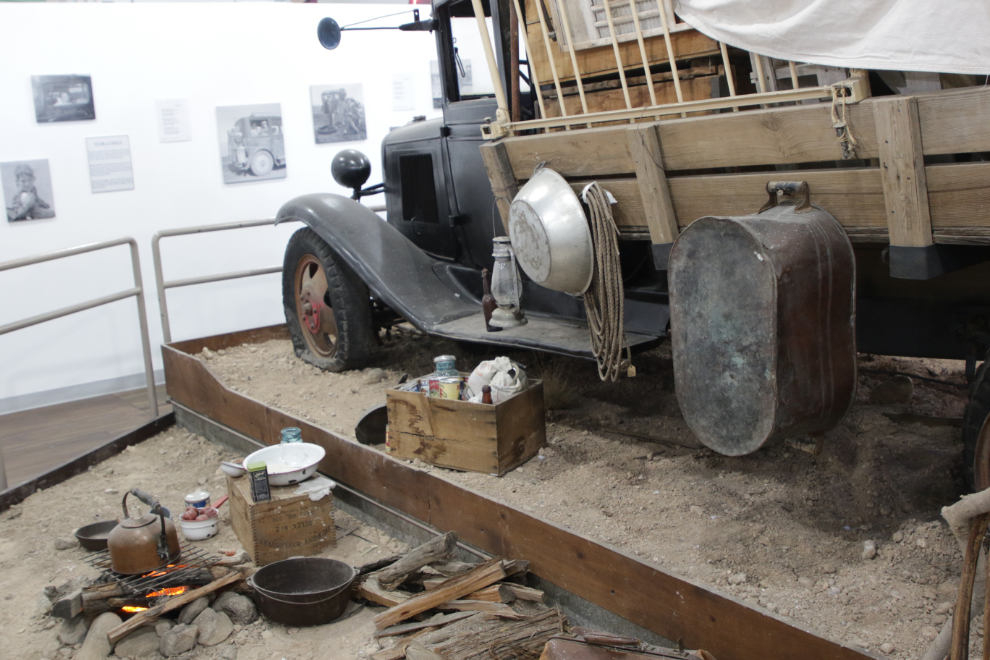
Although this photo isn’t credited and an image search has come up with nothing, it’s very much in the style of Depression-era photographer Dorothea Lange.
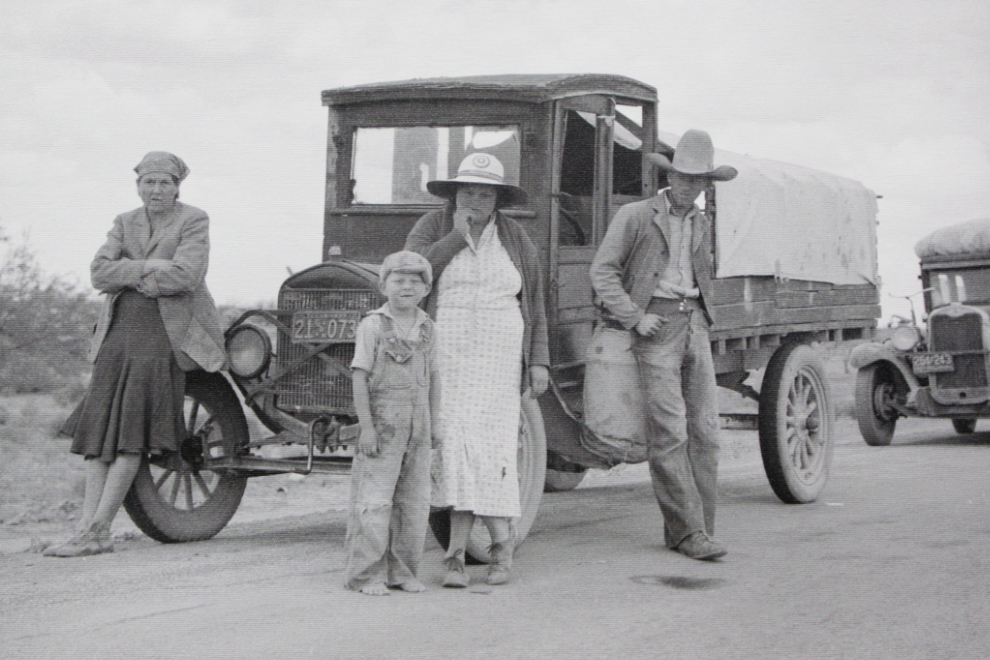
I’m always pleased to find Studebaker playing a part in interpretations. This is a 1950 “Bullet-nose” Studebaker Champion.
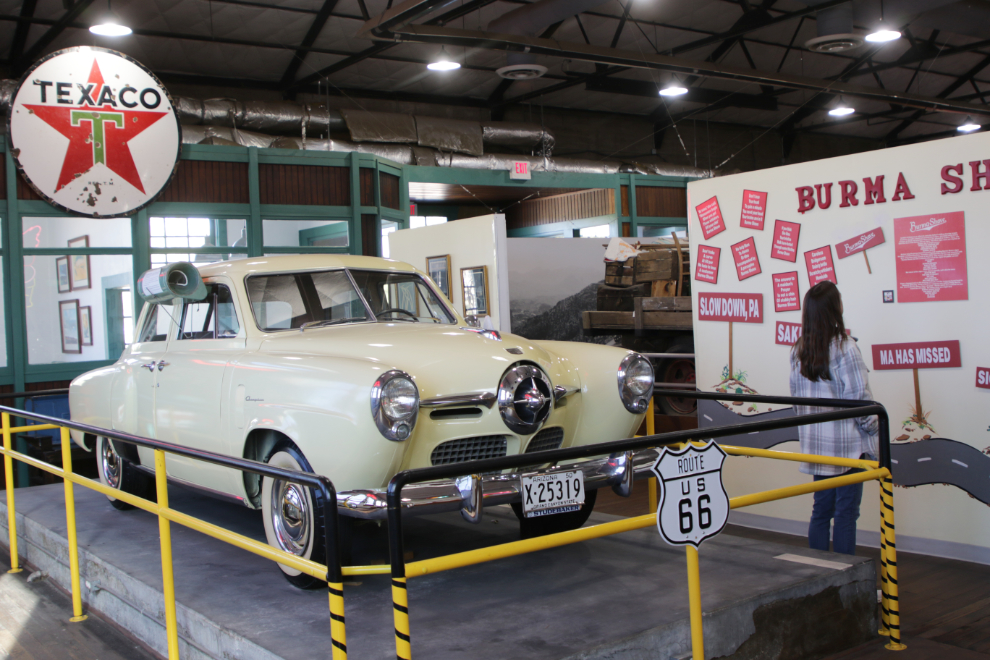
Here’s a close look at the “swamp cooler” air-conditioning unit hanging from the window of the car above.
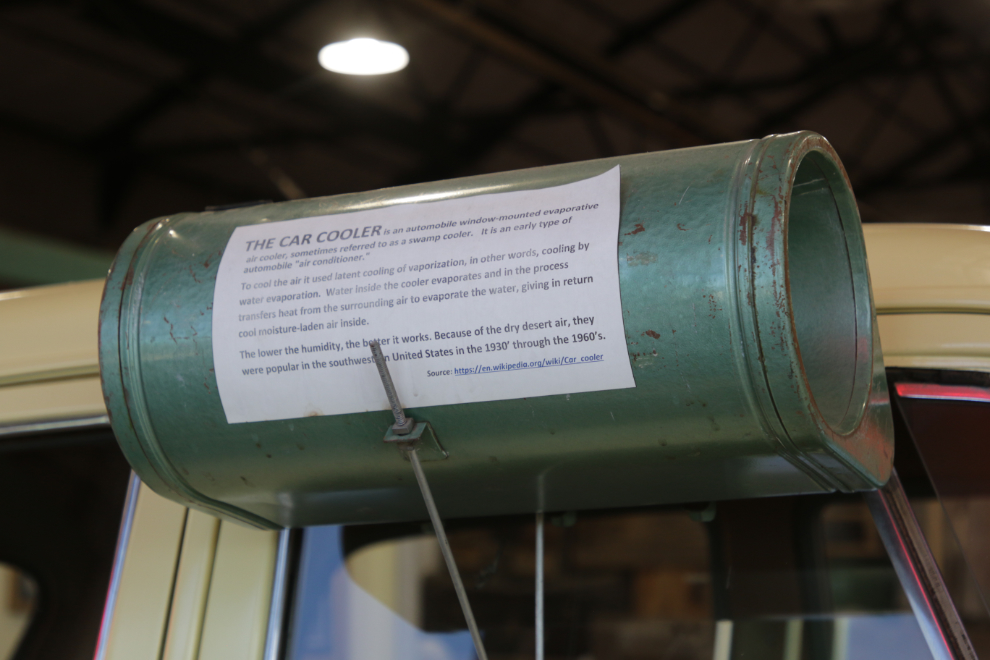
The places where we bought gasoline for our cars 60-70 years ago were very different than they are today.
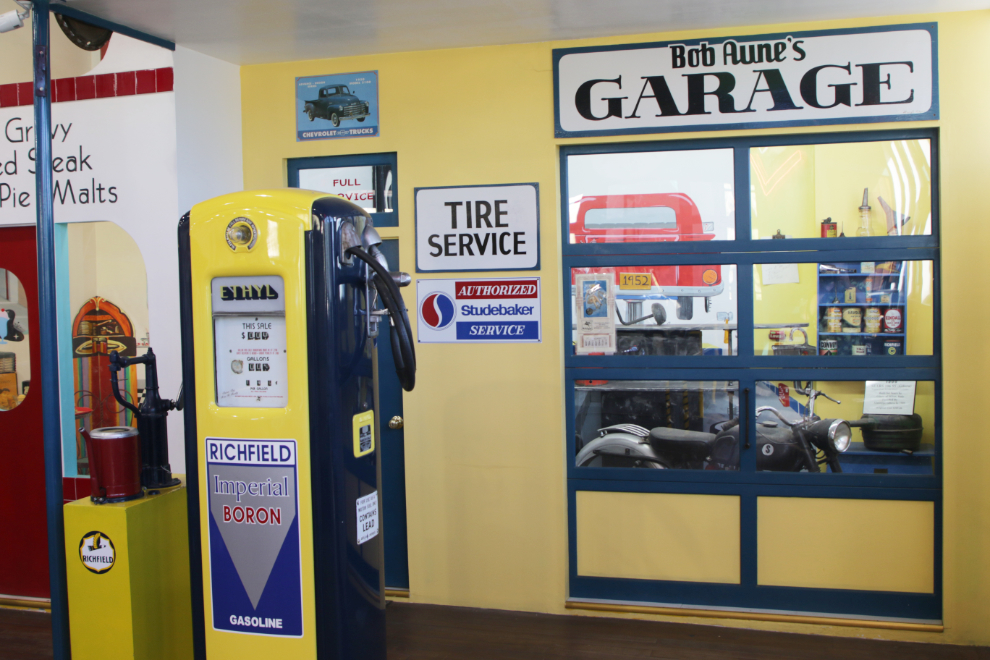
It was great to see a display about the famous Burma Shave highway signs, one of the best-known advertising campaigns in history, I expect.

The “Chat ‘n’ Chew” is a cute look at a 1950s roadside diner. The next morning, we went for breakfast at one that still exists in Kingman.
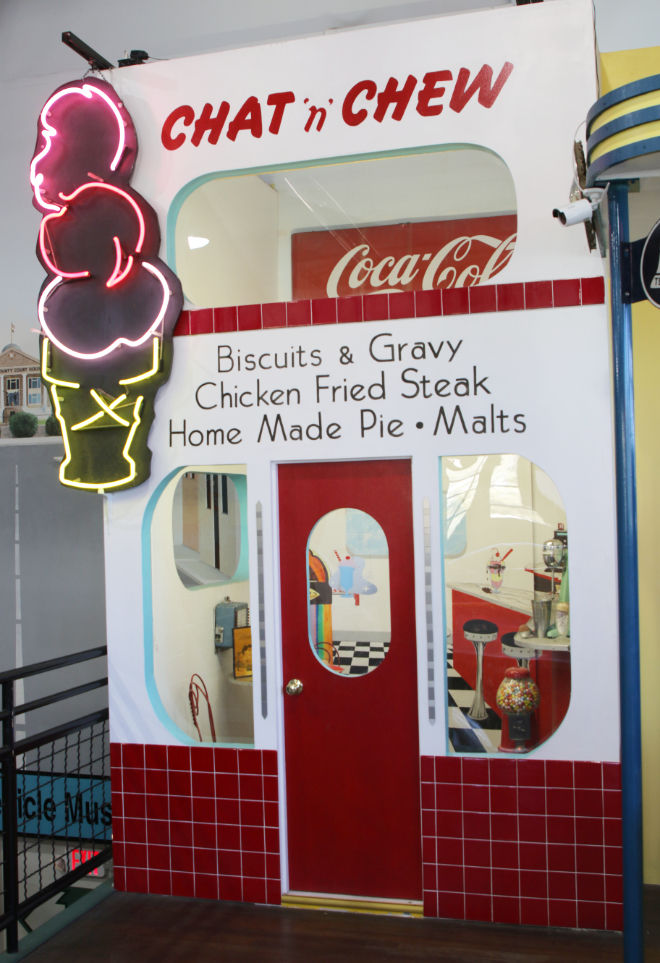
There is some wonderful art.
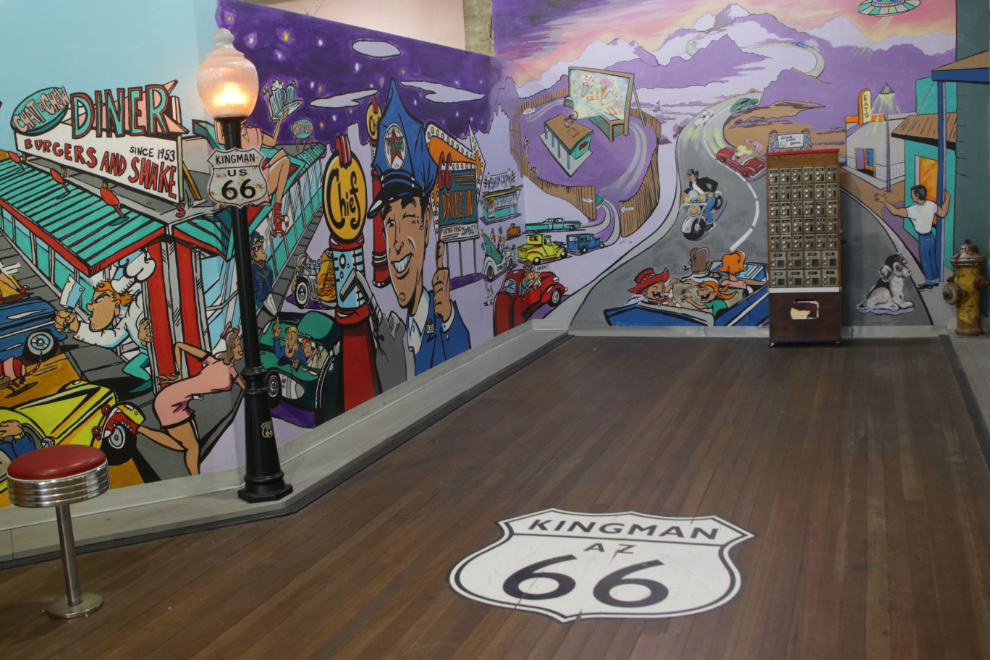
Mining is very lightly touched on – the nearby Mohave Museum of History and Arts is the place to go for that (and much more).
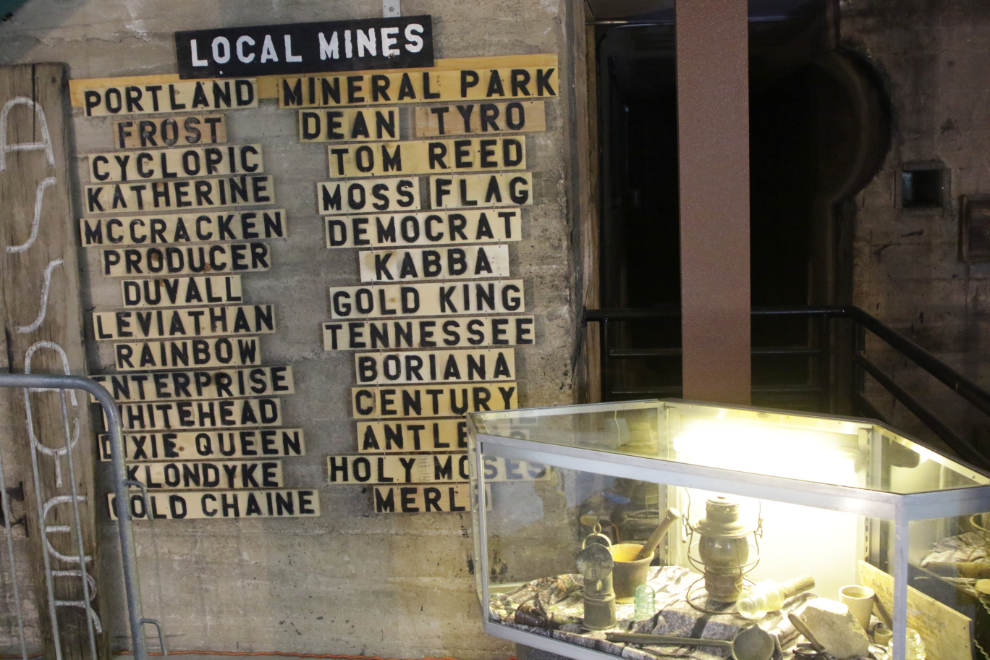
Tucked away in a room downstairs is a tiny bit of the world’s largest collection of electric vehicles. The vehicles are crammed in tightly and hard to photograph properly, but the Historic Electric Vehicle Foundation has a massive expansion in the works, with the initial stage to cost $20 million.
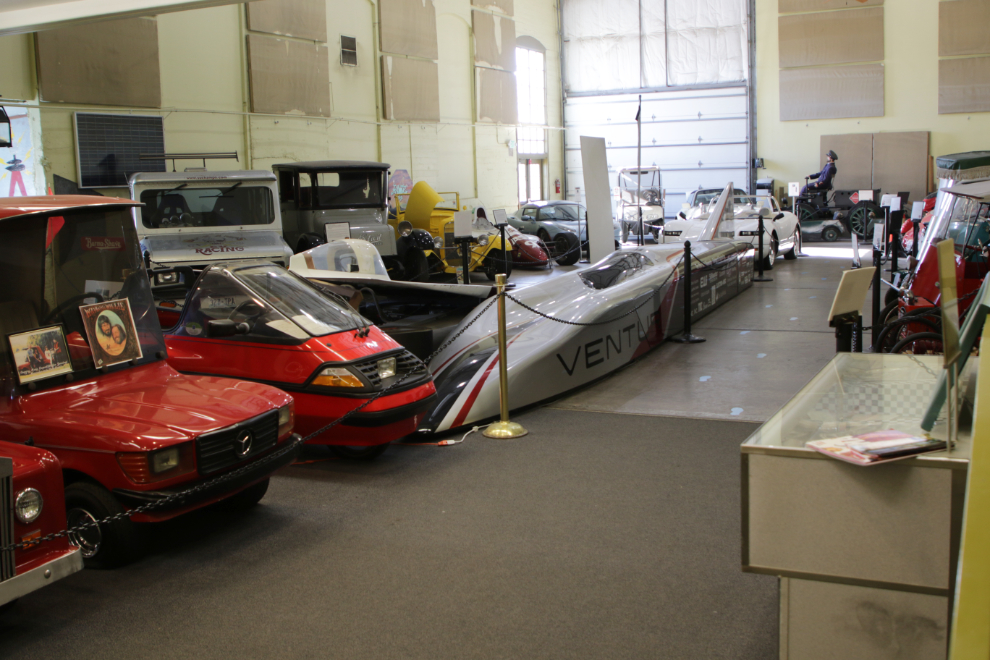
There are a few models of electric tricycle chairs dating back to about 1912.
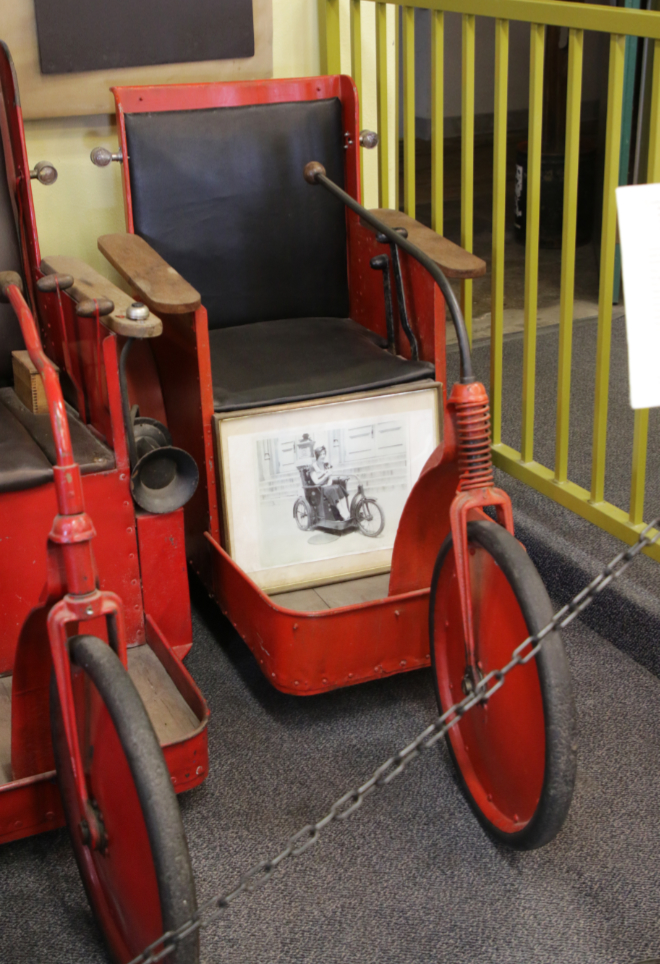
One of the stars is this 2008 Tesla Roadster. Approximately 2,500 of them were built.
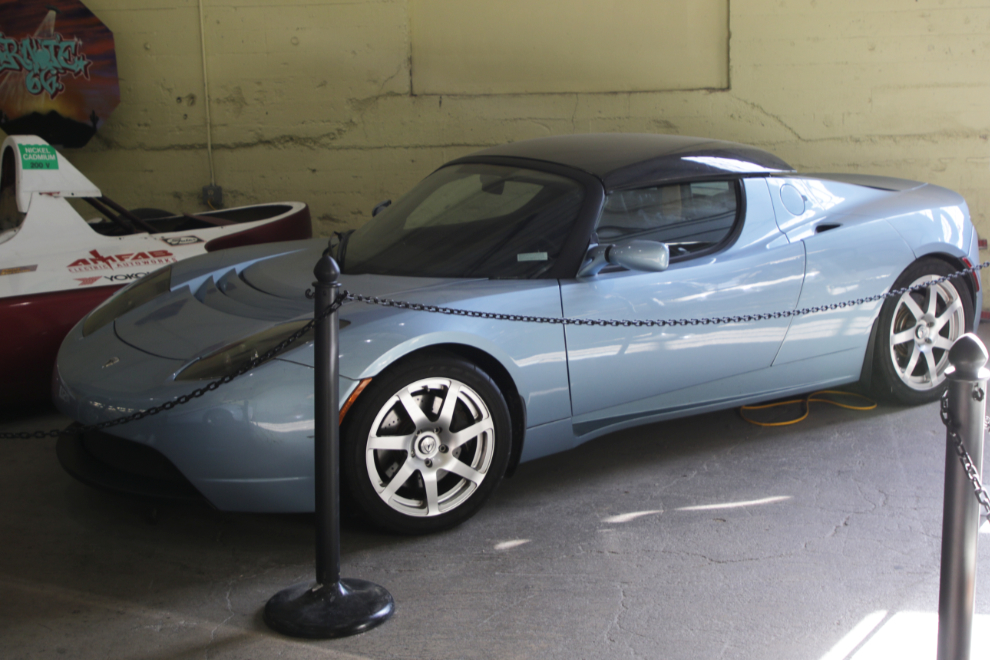
Before heading for Oatman, we shot a few photos at the Route 66 sign in front of the museum. An obliging tourist on a rented Harley shot this one, and we of course, took some of him. If there is one photo that defines this trip, it’s this one – I love it.
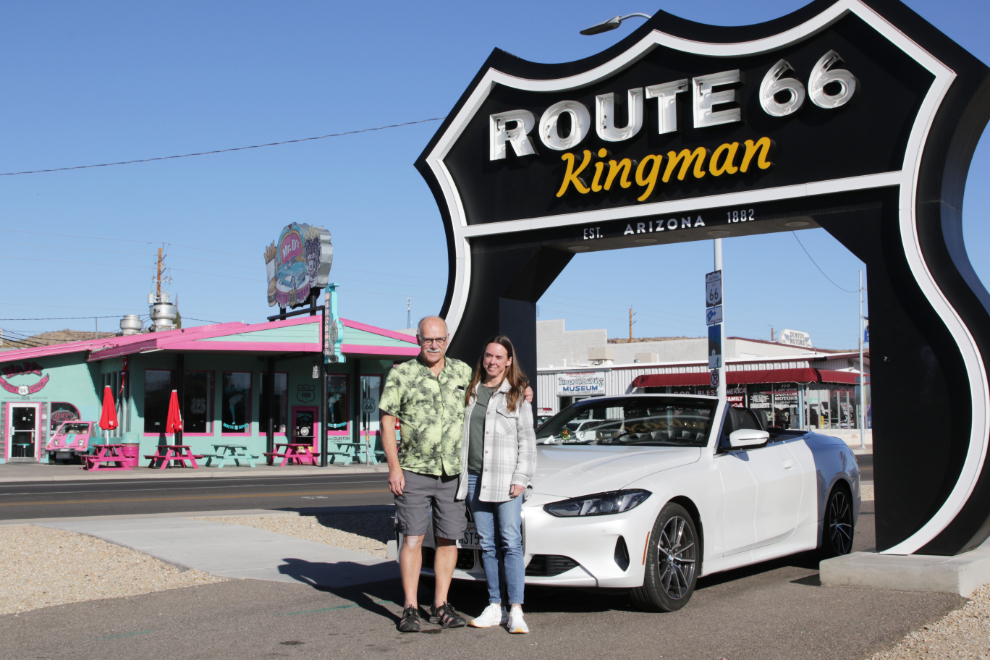

We’ve never driven all of it…. something I should have done earlier.
Loved this! I’d like to see that museum.
Thanks, Shelly – they really did a great job with it.